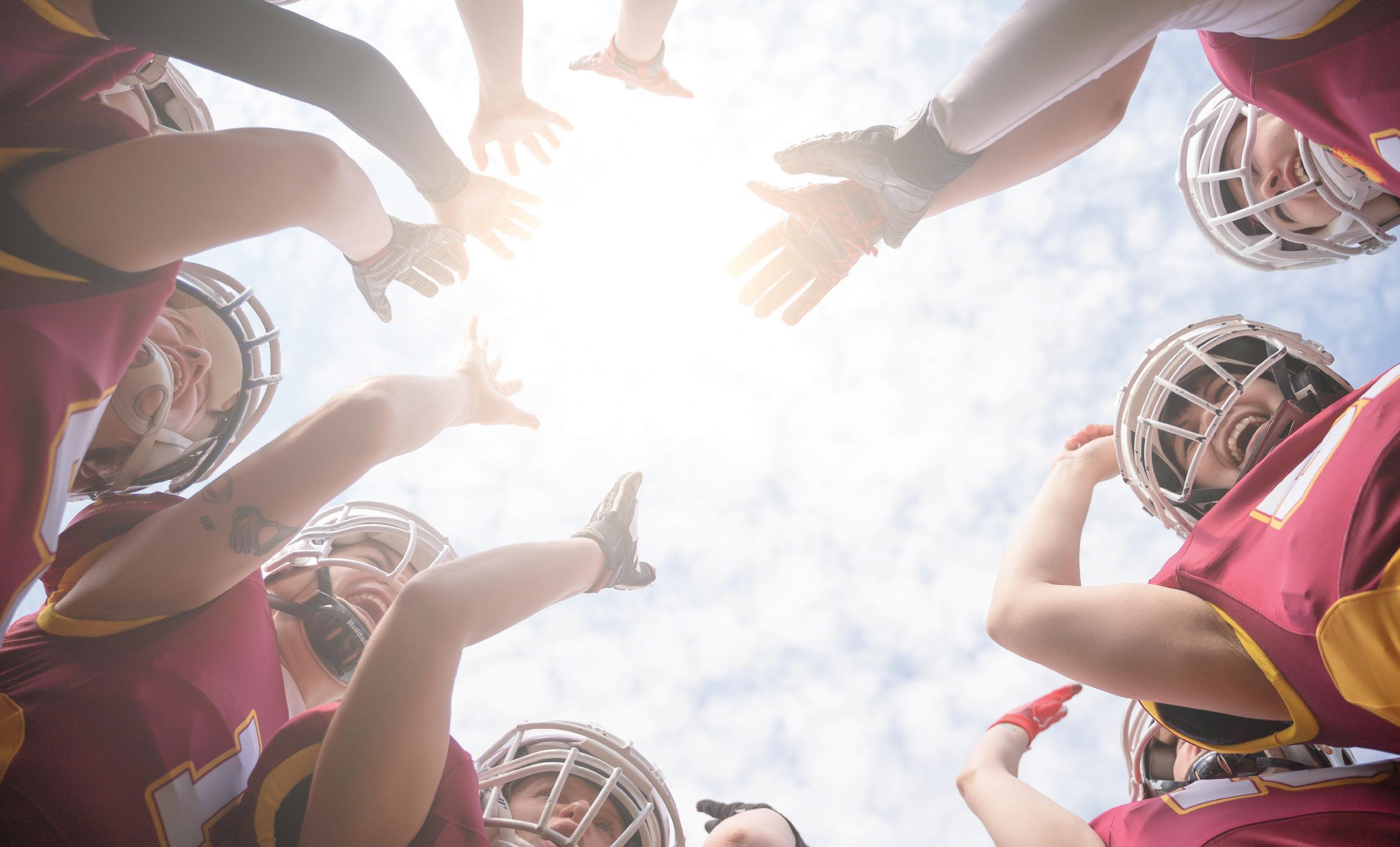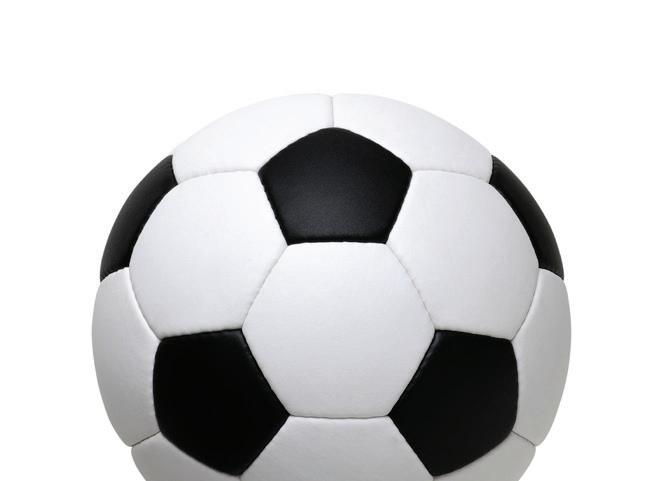
2 minute read
MIGHTY KIDS
PREVENTING FOOTBALL INJURIES
By Christian Dischler
Advertisement
Football season is back and whether the lights are on Friday or Sunday, injuries can greatly reduce time spent on the field. By using intentional and proper methods of preparation, those injuries can be avoided altogether and allow you or your kids to enjoy the gridiron without the added worry. Below are some examples of football injuries and how integrating physical therapy and preventative methods can prevent their occurrence.
Hamstring The hamstring is responsible for many power and acceleration movements involved with football. Quick bursts of speed and sudden stops are directly tied to the strength and flexibility of this muscle. Injuries commonly occur when the muscle is forced to go from an elongated form to a shortened one (imagine sprinting downfield and stopping to avoid a tackle). A stretching routine designed by a physical therapist prepares the hamstring to endure these movements without injury. Also, strength training to improve the surrounding muscle groups will provide fortification and allow for more dynamic movements on the field.
Knee The ligaments and muscles in our knees undergo intense stress while performing football moves. Whether running routes, driving a block, or escaping a tackle, the knee is pivotal in every play. Physical therapy helps to keep the knee ligaments elastic and ready for sudden changes of direction through stretching, strengthening, and more advanced preventative methods like dynamic balance exercises, core muscle endurance, and intentional ice and heat therapies. This suite of therapies and conditioning, coupled with the professional knowledge of a therapist, can ensure the season goes the distance.
Rotator Cuff More specific to certain position groups, the rotator cuff is responsible for the range of motion in our shoulders, which gives power and velocity to throwing and provides the ability to snag a ball from the air. It’s a complicated part of the body and can require precise methods to help prevent injury. There are multiple stretches that can help, but there are also habitual changes that can extend the durability of the shoulder, such as sleeping properly, correct posture, and giving adequate rest when the sign of soreness appears.
Ankle Sometimes an injury that can linger forever, the ankle is a cornerstone for dynamic football movements and should take precedence for injury prevention. Make sure to choose the correct cleats and arch, taping the ankles during practice or games if they are prone to weakness, and conditioning the muscles in the feet to expect the rigors that football can present. The ankles are capable of incredible flexibility if they are prepared properly. Taking the correct precautions will ensure stability on the field while making burst-style plays.













